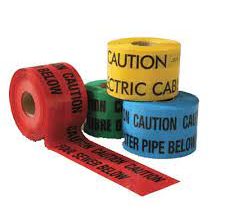
When it comes to earthing protection, choosing the right material is crucial to ensure the safety and reliability of sensitive electronics, especially in areas prone to lightning strikes. The traditional choice for earthing has been galvanized iron (GI) rods, but recently, copper bonded rods have become increasingly popular due to their numerous advantages over GI rods. In this article, we’ll take a closer look at the top 10 characteristics of copper bonded rods and how they compare to GI rods.
Improved Conductivity
Copper is known for its excellent electrical conductivity and it is this property that makes copper bonded rods a better option for earthing purposes compared to GI rods. With a higher conductivity, copper bonded rods offer better and more efficient electrical conductivity, resulting in improved performance and reduced resistance.
Greater Corrosion Resistance
Copper has a natural resistance to corrosion and when combined with a layer of high-grade steel, the rods become even more resistant to rust and corrosion. This makes copper bonded rods ideal for use in areas with high humidity and salt content in the soil, where GI rods are more likely to corrode and deteriorate over time.
Longer Service Life
The improved conductivity and corrosion resistance of copper bonded rods result in a longer service life compared to GI rods. This translates to lower maintenance costs and a better return on investment in the long run.
Higher Tensile Strength
Copper bonded rods have a high tensile strength, making them ideal for use in areas where ground is rocky or has high soil resistivity. They are also less likely to break or deform during installation, which can be a common problem with GI rods.
Lower Ground Resistance
The high electrical conductivity of copper bonded rods results in lower ground resistance compared to GI rods, which means less energy is lost and more is available for protection during a lightning strike.
Better Compatibility with ESE Lightning Arresters
Copper bonded rods are highly compatible with early streamer emission (ESE) lightning arresters, which are widely used in critical infrastructure such as airports, railway stations, and power plants. The improved conductivity of copper bonded rods ensures the effective functioning of the ESE lightning arrester in the event of a lightning strike.
Cost-Effective
Although copper bonded rods may have a slightly higher upfront cost compared to GI rods, they offer better value in the long run due to their improved performance, longer service life, and reduced maintenance costs.
Versatile
Copper bonded rods can be used in a variety of applications, including earthing of electrical equipment, protection of sensitive electronics, and railway earthing material, among others.
Easy Installation
Copper bonded rods are easy to install, making them ideal for use in remote and difficult to access locations, such as railway tracks and power substations.
In conclusion, copper bonded rods offer several benefits over GI rods, making them a more attractive option for earthing protection applications in a variety of environments. They provide improved conductivity, better corrosion resistance, a longer service life, higher tensile strength, lower ground resistance, better compatibility with ESE lightning arresters, better cost-effectiveness, eco-friendliness, versatility, and ease of installation. Whether you’re looking to protect sensitive electronics, critical infrastructure, or railway earthing material, copper bonded rods provide a reliable and cost-effective solution for your earthing needs.
The Importance of Regular Maintenance for ESE Lightning Arresters
Lightning strikes are a common and dangerous phenomenon that can cause major damage to electrical equipment and systems. These lightning arresters detect the approach of a lightning strike and emit an early streamer to attract the lightning strike and safely conduct it to the ground. Regular maintenance of these arresters is important to ensure that they function properly and provide adequate protection against lightning strikes.
Why Regular Maintenance is Important:
Ensures Reliable Protection
Regular maintenance of ESE lightning arrester helps to ensure that they are functioning properly and providing reliable protection against lightning strikes. A regular check-up of the arresters helps to identify and fix any defects or problems, thereby improving their performance and increasing their effectiveness in providing protection.
Increases the Lifespan of the Arrester
Regular maintenance can help to extend the lifespan of the arrester by fixing any problems and ensuring that it continues to function effectively.
Prevents Unplanned Outages
Regular maintenance can help to prevent unplanned outages caused by lightning strikes. This is especially important for businesses and critical infrastructure that rely on reliable power and cannot afford extended downtime.
Maintains Safety
Lightning strikes can pose a serious threat to human safety, especially in electrical systems. Regular maintenance of ESE lightning arresters helps to ensure that they are functioning properly and providing adequate protection against lightning strikes. This helps to maintain safety and reduce the risk of injury or damage to property.
At the End
ESE lightning arresters play an important role in protecting electrical equipment and systems against lightning strikes. Regular maintenance of these arresters is crucial to ensure that they function properly and provide adequate protection. By performing regular maintenance, businesses and critical infrastructure can reduce the risk of damage and unplanned outages, maintain safety, and extend the lifespan of the arrester. Regular maintenance should include inspection, testing, cleaning, and updating a maintenance log.
It is important to seek the services of a qualified team such as Ennob for regular maintenance of ESE lightning arresters. A qualified team will have the necessary equipment and expertise to perform maintenance safely and effectively. By investing in regular maintenance, businesses and critical infrastructure can protect themselves against the damaging effects of lightning strikes and ensure that their electrical systems are functioning optimally.




